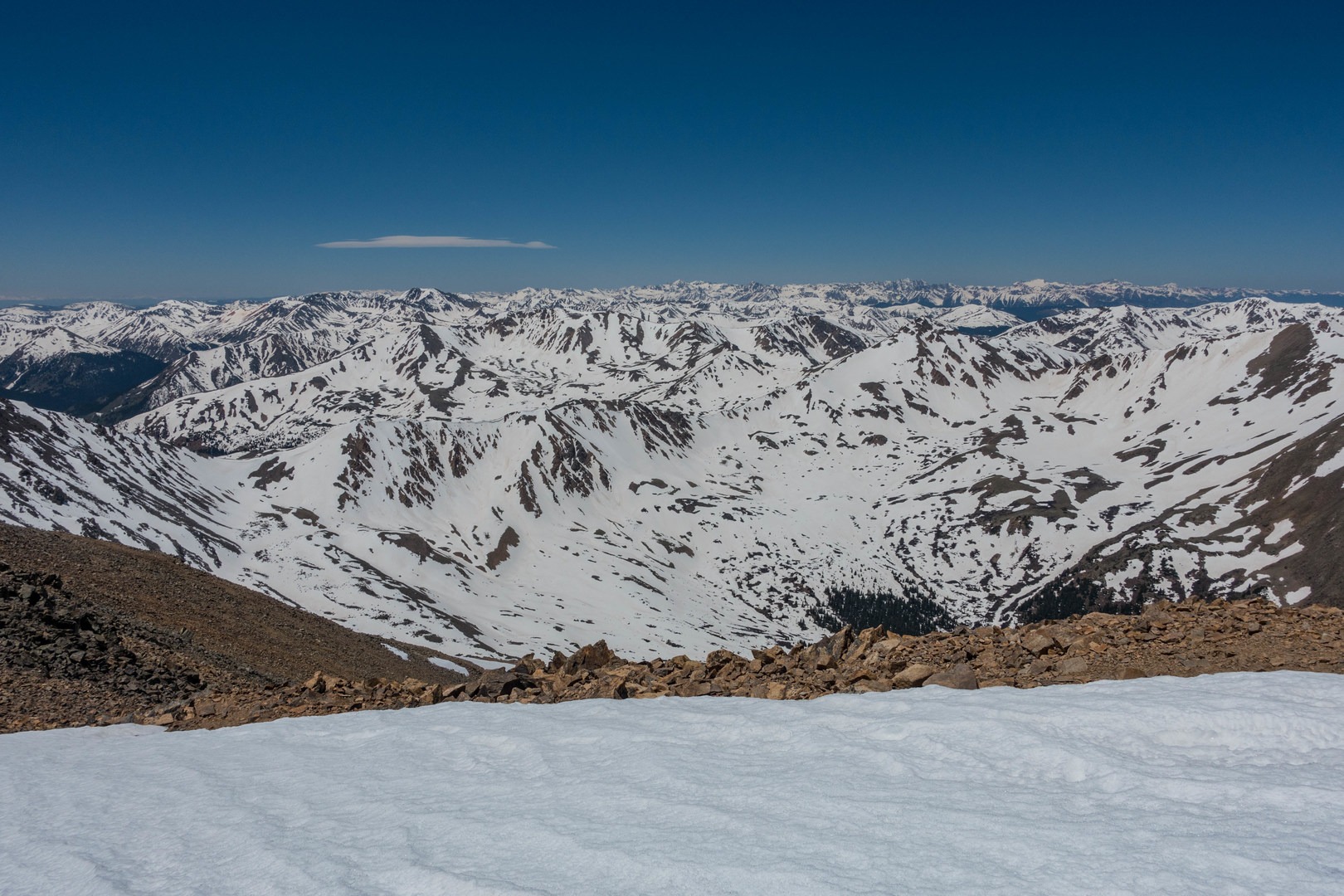You are here
Fourteeners are a special tradition among hikers in Colorado, so much so that showing up to a trailhead after 6:00 a.m. can mean fighting for a parking spot for any peaks near Denver. The highest summit of these is Mount Elbert at 14,439 feet, making it the tallest peak in the Rocky Mountains and second-tallest summit in the contiguous United States after Mount Whitney in California—only 66 feet taller. This small difference pales in comparison to the unfortunate Mount Massive next to Elbert, which is only 12 feet short of this grand title.
The relationship with Mount Massive is an interesting one. Originally the difference in height was understood to be only 5 feet, which prompted climbers of Mount Massive to climb it and build a pile of rocks to make up the difference. Elbert climbers would then climb Massive to knock down the pile to keep Elbert in the lead. Only in Colorado would you find such a unique rivalry of summits.
There are many ways to the top of Elbert: two Class I routes up the Northeast Ridge and East Ridge, and two more standard Class II routes.
The East Ridge route is the standard winter route that also makes a fine summer route if you want a longer and more gradual climb. Two trailheads service this trail, neither of which have any restrooms or other facilities. The lower trailhead has a paved road, and those with higher clearance vehicles can continue on the four-wheel drive road to the upper trailhead. There are several small pull-offs for parking in case you reach an obstacle your car cannot overcome.
From the lower lot, follow either the Colorado Trail or the four-wheel drive road up to the upper trailhead. Join the Colorado Trail northward for a short distance until the signed access to the Elbert East Ridge prompts you to turn left. At this point, it’s all uphill to the summit. The hike has three main sections. The first keeps you in an aspen forest that changes to lodgepole pine and eventually hits treeline until a grassy open ridge with wide views eventually connects to the main East Ridge. On this ridge is the best place to spot wildflowers; keep an eye out for alpine aven (Geum rossii), shortstyle bluebells (Mertensia brevistyla), and whiskbroom parsley flowers (Harbouria trachypleura).
At this point the grass gets sparse, and it will either be a long slog in snow or dirt and rock to the summit. In the winter you can mostly make your way straight up the ridge, whereas in the summer it is recommended to stay on the defined boot path to avoid trampling the delicate alpine tundra. If you are lucky you may be able to spot marmot, bighorn sheep, mule deer, black bear, or elk depending on the season.
Making the summit is an amazing feeling, and you can rest assured there is not a mountain in sight that is taller. Mount Whitney is almost 700 miles away. From the top you can see hundreds of peaks in all directions, including many other 14ers like Quandary, Massive, Sherman, Holy Cross, Democrat, and many more. While the mileage may not seem too intimidating, make sure to start very early and be off the summit by early afternoon as thunderstorms can develop and roll in quickly even when forecasts may suggest otherwise.
This climb can be done in all seasons provided you have the right gear and experience for snow. Do not attempt in less than favorable weather and know your limits. You will find many ski mountaineers climbing this peak in winter and spring if the weather is right.
Logistics + Planning
Current Weather: Powered by Dark Sky
























Comments
Sign In and share them.